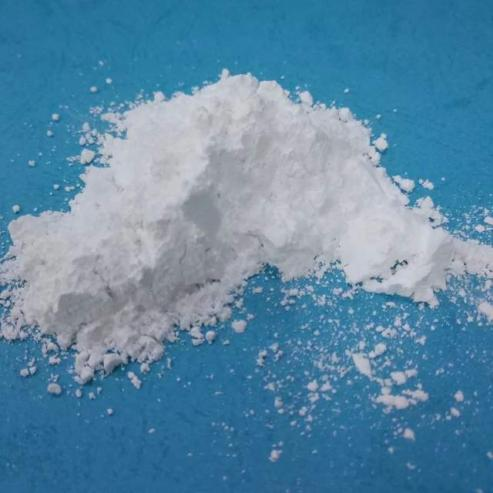Zirconium Phosphate
Zr(HPO₄)₂·H₂O, an inorganic layered material composed of phosphate ions (PO₄³⁻) and crystalline water, exhibits a melting point exceeding 1600°°C. Our company produces various zirconium phosphate crystal types including Type α and Type γ based on structural composition variations. With precise control over product characteristics such as particle size, PH levels, and moisture content, we offer versatile formulations in powder, liquid, and spherical forms to meet diverse application requirements.

Zirconium phosphate can be used for:
Environmental engineering: heavy metal adsorbent, radioactive waste treatment.
Energy materials: proton exchange membrane (such as PEMFC), lithium ion battery electrode materials.
Catalysis: acid catalyst, photocatalyst carrier (e.g. TiO₂/zirconium phosphate complex).
Biomedicine: drug carriers (such as controlled release of anticancer drugs), antibacterial materials.
Composite materials: enhance the mechanical properties or flame retardancy of polymers (e.g., epoxy resin filled with nanosheets).
1. Product features:
1.1 Structural characteristics
-Layered structure: the crystal structure of zirconium phosphate is a two-dimensional layered network formed by [ZrO₆] octahedron and [PO₄] tetrahedron sharing oxygen atoms. The interlayer is bonded by hydrogen bond or ionic bond, and the interlayer spacing is adjustable.
-Exchangeable protons or ions: interlayer H⁺(acidic form) or metal ions (such as Na⁺, K⁺) can be exchanged by other cations, giving them ion exchange properties.
-High specific surface area: nanosheets can be formed by intercalation or exfoliation, which significantly increases the specific surface area.
1.2 Physical and chemical properties
-Thermal stability: high temperature resistance (decomposition temperature is usually>500°C), suitable for high temperature environment.
-Chemical stability: resistant to acids, alkalis and organic solvents, but may gradually dissolve in strong alkalis.
-Proton conductivity: The migration of H⁺ between the layers makes it a potential solid proton conductor for fuel cell electrolytes.
-Controllable pore size: the layer spacing can be adjusted by intercalation of organic molecules to form a molecular sieve like structure.
1.3 Functional characteristics
- Ion exchange capacity: strong adsorption of heavy metal ions (e.g., Pb²⁺, Cd²⁺) and radionuclides (e.g., UO₂²⁺, Cs⁺, Sr²⁺) for wastewater treatment.
- Catalytic performance: Acidic sites (-PO₄H) can catalyze esterification, cracking and other reactions, or serve as a carrier for metal catalysts.
- Interlayer chemistry: organic molecules (such as amines and polymers) can be embedded to prepare organic-inorganic hybrid materials.
- Biocompatibility: low toxicity, can be used for drug release or biosensors.
2. Recommended Additions:
The recommended amount is 2-5%
2.1 Anti-corrosion coating
-Corrosion resistance: Zirconium phosphate itself has stable chemical properties, acid, alkali and high temperature resistance, and can be used as inert filler to enhance the durability of the coating in harsh environment.
-Passivation: Zirconium ions (Zr⁴+) may participate in the passivation reaction on the metal surface, forming a stable protective layer of zirconium oxide (ZrO₂).
-Reinforcement effect: As a nano or micron level filler, zirconium phosphate can improve the hardness, wear resistance and adhesion of the coating, reducing local corrosion caused by mechanical damage.
-Reduce porosity: Fill the microholes and defects in the coating to reduce the weak points for corrosion medium penetration.
2.2 Ceramics
-Can be used as additives, or structural ceramics (zirconium phosphate can be used as high temperature bonding material).
-Insulation matrix, spark plug ceramics, ceramic fine parts, refractory ceramics, high precision ceramic components, temperature sensitive ceramic parts.

Follow WeChat


